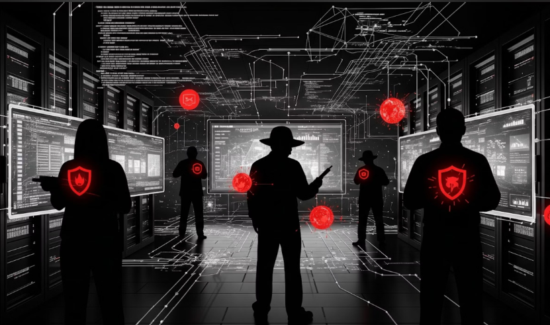What is the Future of Endpoint Security? Possible Visions


What is the future of endpoint security? Where does it fit within business IT security plans and policies now, and how might that change? How should enterprises approach endpoint security with a nod to other cybersecurity solutions?
First, let’s start with the obvious: endpoint security still matters, and will continue to matter for quite some time. The rise (or return) of ransomware en masse makes ignoring endpoint security a recipe for disaster. Malware, while not the most common source of data breaches or network infiltrations, continues to cause harm to reputations and bottom lines to businesses of all sizes. We still rely on endpoint protection platforms for their endpoint detection and response (EDR) capabilities, application control, and more.
To go more abstract on this thought, endpoints constitute a gateway into your IT environment, as it is the primary means of interactions for users. Neglecting to protect them while prioritizing data centers and databases will lead to disaster. In other words, if you don’t have a next-generation endpoint security solution, you need to check out our Endpoint Security Buyer’s Guide.
But the question becomes how the future of endpoint security might unfold. Will endpoint security evolve into something more akin to identity management? Will it become more lightweight or streamlined?
Here are some possibilities.
The Future of Endpoint Security: Possible Visions
Endpoint Security Goes Lightweight
One of the challenges facing endpoint security involves the digital perimeter. Originally, endpoint protection platforms worked to fortify the digital perimeter, barricading networks from intrusion. However, that lofty goal no longer proves feasible in the modern threat landscape. Not even the most secure digital perimeter can deflect 100 percent of all attacks.
Further, what does the digital perimeter even mean now? That isn’t meant as a glib question; cybersecurity experts debate what the digital perimeter can possibly include now that enterprises incorporate third-party networks, applications, cloud databases, mobile devices, and identity management tools into their IT infrastructure. The digital perimeter as it exists now is a porous hodgepodge of materials.
What does this mean for the future? Possibly that endpoint security stops worrying as much about prevention and instead shifts to a more EDR oriented framework. This would focus their capabilities on detection and response rather than prevention outright. Moreover, it would probably incorporate more application control and sandboxing, tools that limit what can participate in the network rather than barricading them outright.
In any case, it might mean pulling back from its traditional antivirus and focusing on more lightweight tools to keep an eye on as much as possible throughout the IT environment.
Endpoint Security Merges with Identity Management?
Another possible future for endpoint security intertwines with identity management. Many security professionals contend that identity now forms the real digital perimeter, given that so many attacks, leaks, and breaches begin with authentication failures or compromised credentials. Experts now discuss capabilities once the province of identity management alone in the same conversation as endpoint security, such as multifactor authentication and Single Sign-On.
What could this imply? Perhaps endpoint security evolves into something more like identity management, hybridizing with its EDR, antivirus, and application control tools. It’s entirely possible that endpoint protection platforms begin trying to compete with identity management by positioning themselves as “complete packages” as they develop their own authentication capabilities.
Alternatively, keep an eye out for more mergers and acquisitions. Cybersecurity as a market changes constantly, so a pattern may become evident soon.
Endpoint Security Switches to Monitoring
Part of what EDR, application control, and other vital capabilities share is an emphasis on monitoring. It extends your IT security team’s insight into your environment, keeping an eye on the more mobile and fluid portions of the network. This extends to email security as well, since that focuses on monitoring incoming and outgoing emails and ensuring sensitive data doesn’t leave and malware doesn’t enter.
So perhaps endpoint security changes from prevention via hard walls (metaphorically) and transitions into some like surveillance or endpoint management. Keeping track of all components of endpoint security can take a lot of effort, so any tool that can help would provide significant assistance.
Perhaps you have your own vision of the future? Check out our Buyer’s Guide to see how the top solution providers continue to evolve in an ever-changing market.



















